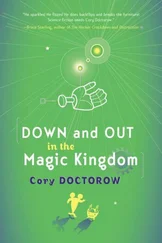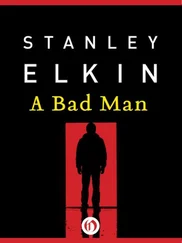If nothing else, her duties as a nanny had given her expertise in that department. (Hadn’t she bathed and toweled dozens of children? Hadn’t she helped bathe and actually dress all those step- and less-than-step—“stair relation,” she called them — brothers and sisters of her early years?) And if her expertise was largely limited to the bodies of children, why, weren’t the bodies of children bodies in their purest form? Didn’t children wear the sharp, original shape of form itself? Hairless, without extrusion or eyesore, the blemish of sex? (She was no prude. She did not mean blemish. She only meant the body distracted from itself, allowed to drift from its intentions, from the air-and skin-tight condition of bone in its bearings: the baroque scroll and ornament of palimpsest flesh.) She had rub-a-dub-dubbed girls and boys for almost as long as she could remember and, seated on stools and chairs for leverage, drawn their bodies to her within the open V of her legs (and as little pederast as prude), vigorously scrubbing, rubbing, grooming them — for bed, for parties — as if they’d been poodles in shows, the texture of their skins and every inch and hollow of their bodies known to her even beneath the thick, rough nap of the towels and soft, slippery film and feel of the soap, discounting the misleading temperature of the water. Practicing on all that devolutionary line, her mitigated steps and halves (the two stepchildren, the stepbrother and stepsister, the half sister, the half brother, the three — what? — cousin sisters and her half brother’s sister, half brother and half sister and two stepsisters by the double widower, so that for the rest of her life she feels she stands — she doesn’t know where she stands — as much in sororal parentis as loco), the way some other little girl might play with dolls.
So, without ever having had any very particular interest in them, she knew about bodies. At least was accustomed to them, the little boys and girls just so much neutral doll stuff to her. Knew, that is, their surfaces, their skins, polishing them, buffing their luster like firearms for inspection. As long ago, or for the child long ago (when she was five, when she was six, when she was seven and eight and nine), she had once buffed her own, slipping out of her bed when Nanny had read her her book, when, the child feigning sleep, the woman had leaned over her and made one last adjustment of the bedclothes, the little girl’s hair, and tiptoed out of the room, Nedra listening for her steps to fade before leaving the bed to go to the wardrobe, where, if it was during the warm months, she looked inside the sleeve of her thick winter coat or, during the cold, the sleeve of her lightweight summer one for the carefully rolled towel she hid there, returning not to the bed but to the full-length mirror that stood, out of sight of the window, in the corner of her room, there to remove the pretty nightdress and to examine her chest where she could not remember when she did not know one day breasts would grow, to see if the small, discrete port-wine stain, no larger and not unlike the partial ring that might be made by a damp glass set down on a wooden surface, was still there.
Which it always was, of course.
Using the towel, but only in those warm months first lubricating its edge with her spittle or with water from the glass on her night table (because a little wetness would not leave a mark on the grand, thick winter wool, whereas the light summer one easily spotted), at first patiently rubbing at it for as long as ten minutes, as if she wished to make it shine perhaps rather than disappear (and only in the cold months applying the elbow grease, using the material like an eraser rubber, scratching at it with the dry towel, abrading, scouring, swiping at it as one would strike a match against a strip of friction, actually scraping it until it bled — although never with her nails, though she longed to tear at it and was held back only by scruple, some prohibition she’d heard of against self-mutilation — raising welts, raising galls, bruising her bruise), only then switching from damp end to dry, going at it for ten more minutes or so but still gently — it was summer, it was close in the room, effort raised perspiration, and Nedra could not tolerate the smell of her own sweat, as she could not tolerate any of her imperfections — still with that same craftsman’s restrained and delicate patience. (So maybe it was the warm months that saved her, that kept her from raising a cancer too, that reprieved her from the English climate with its three-to-one ratio of cool to warm like a recipe for a pitcher of martinis.)
Though her nanny could see the results when she bathed her.
“Are you still playing with that thing on your chest?”
“I don’t play with it.”
“You do. One day you’re going to develop a nice case of blood poisoning from that nasty tic.”
But the nanny was wrong. It wasn’t a tic. What she did wasn’t unconscious, in no way like biting her nails or fooling with her hair, although she had neither of these habits. All she wanted was to be rid of the thing, to have it whitewashed away by her furious frictions. (And, sometimes — this would have been during the warm months, past her bedtime, the pale sunlight coming into her bedroom window, mixing with the light from the ceiling fixture, the lamp on her night table, or during the cold months, the night slamming against the window glass, the room’s only light coming off the dim wattage of the fixture on the ceiling and the lamp on the night table — she believed that the thing was actually fading.)
The doctor saw it when she went for examinations.
“Does it hurt?”
“No.”
“Does it itch?”
“No.”
“Then why fool with it? You’re just irritating it, you know. You’re going to end up with a bad infection. I’ll give her a salve for that thing. I want this put on the area every night after her bath for five days. Now, Nedra,” the doctor said, “this medicine is very strong. It’s a steroid ointment and you mustn’t scrape at it. You have to let the ointment do its work.”
Which Nanny applied and which Nedra, misunderstanding, and seeing that so far the salve had merely helped to take down the rawness without doing anything to the stain itself, and believing that the doctor was afraid of dispensing it in too strong a dose — she’d lost a mum; she knew about dosages, strong drugs, the reluctance doctors had to let a patient have them even when they were clearly helping; her mum’s morphine, for example, which the doctor told her mum she could take every four hours but which she needed again after two — continued to apply herself for another week, until, in fact, there was no more left in the tube and she had developed an ugly rash all over her body. The doctor told her she was allergic to steroids and no longer prescribed them. The rash cleared up in a while but the stain was still there.
Which she knew the name for now — stigma — and looked up in her father’s dictionary. Learning that the purplish, iridescent flaw she wore like a piece of costume jewelry branded into her skin was, variously, “a mark burned into the skin of a criminal or slave; a mark or token of infamy, disgrace, or reproach”; and, under Medicine, “a mark on the skin that bleeds as a symptom of hysteria; a mark indicative of a history of a disease or abnormality”; and, far down, at the end of the list, past its biological definitions—“the respiratory spiracle of an insect or an eyespot in algae”—and botanical ones, she read that stigmata were “sores corresponding to and resembling the crucifixion wounds of Jesus”—not hers, which more closely resembled a crescent moon stamped by that hypothetical glass of beer, say, left to dry on that hypothetical bar—“and sometimes impressed on certain persons in a state of religious ecstasy or hysteria.”
Читать дальше












